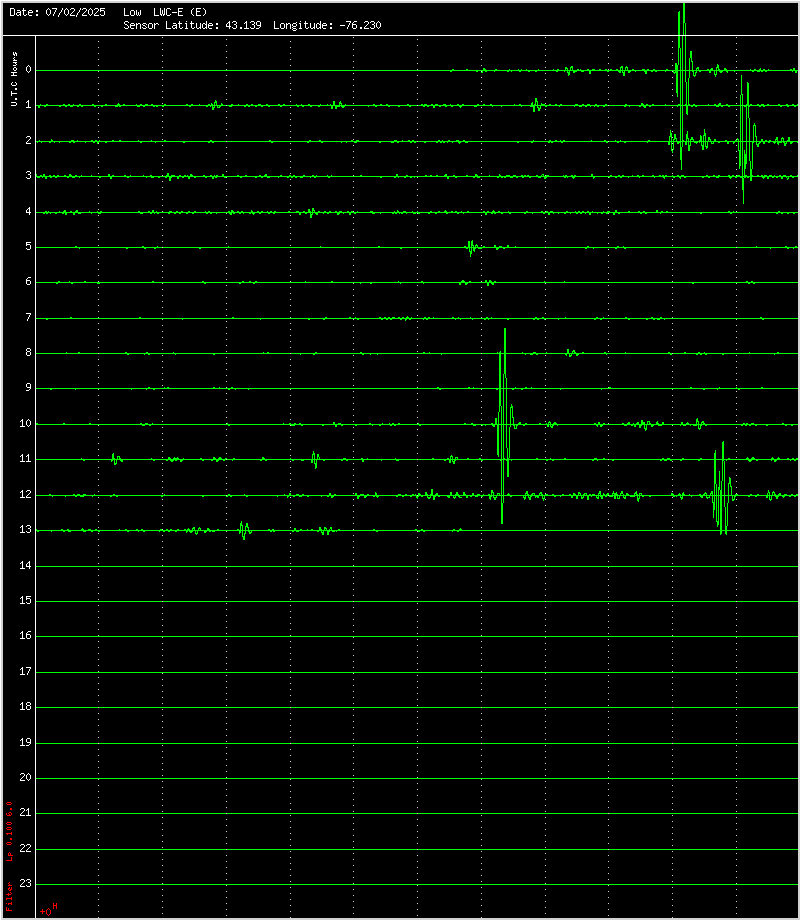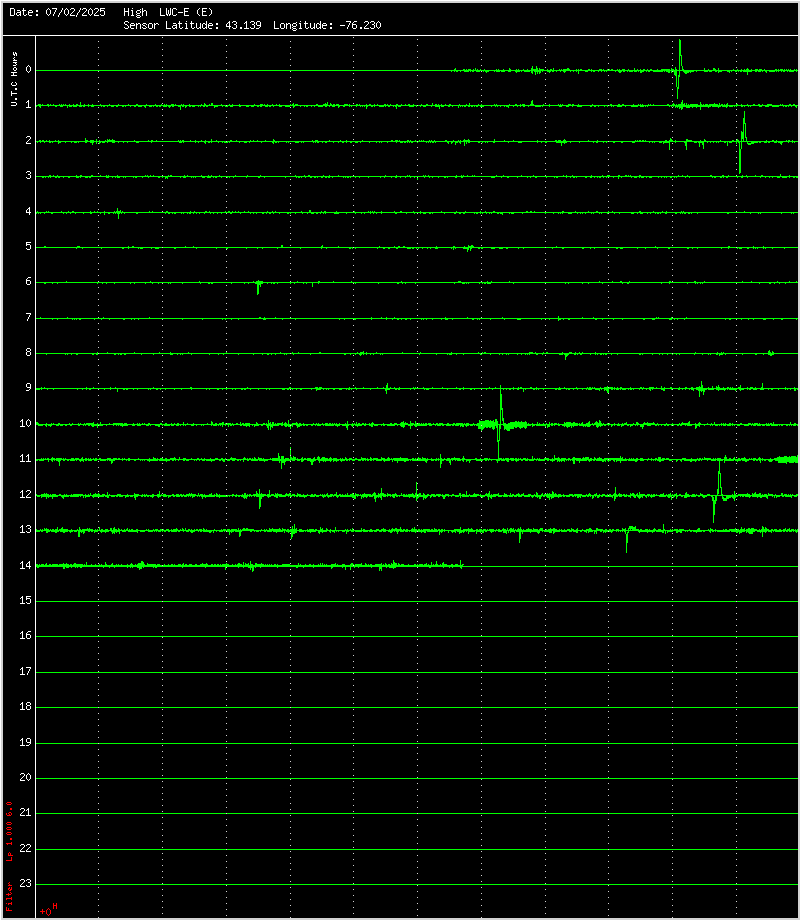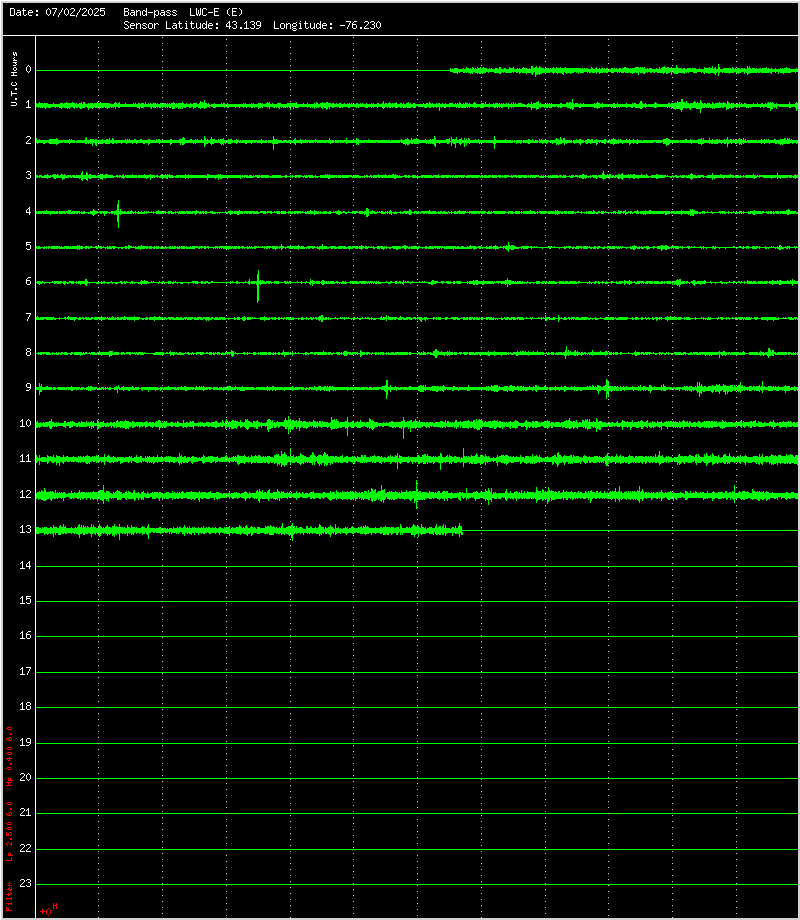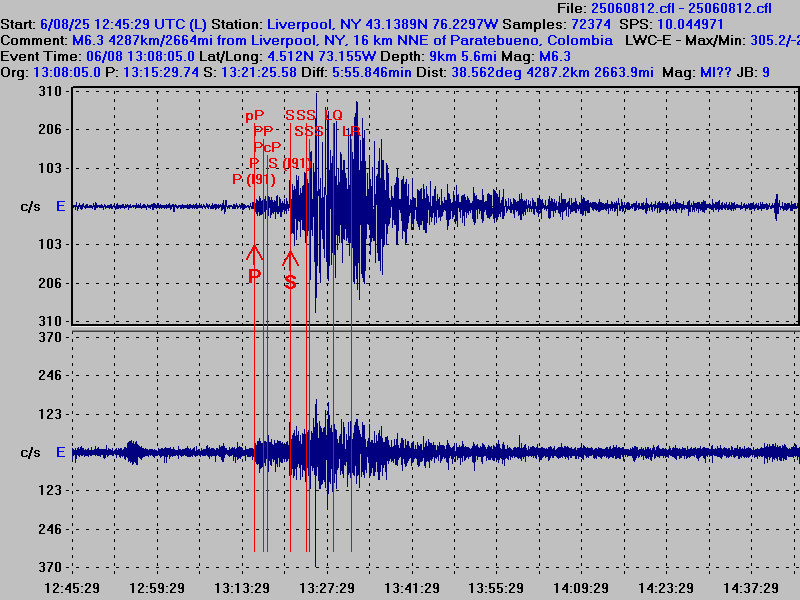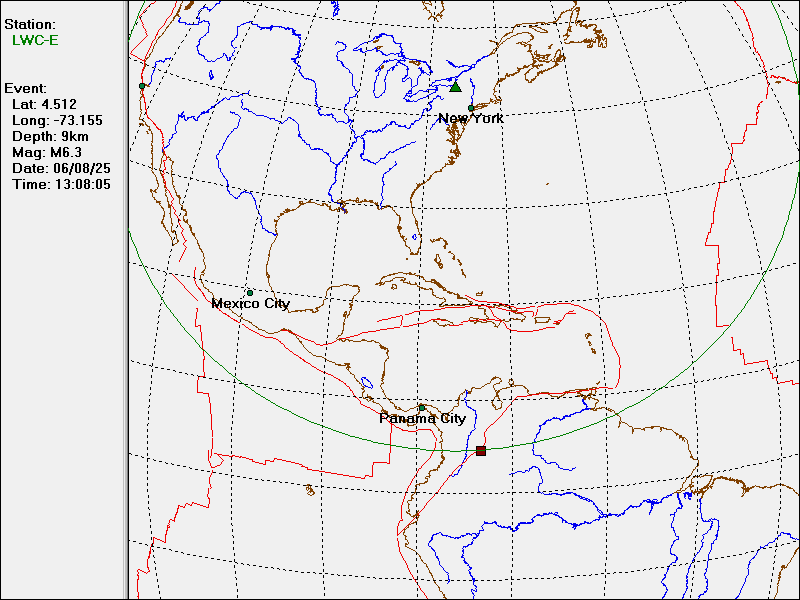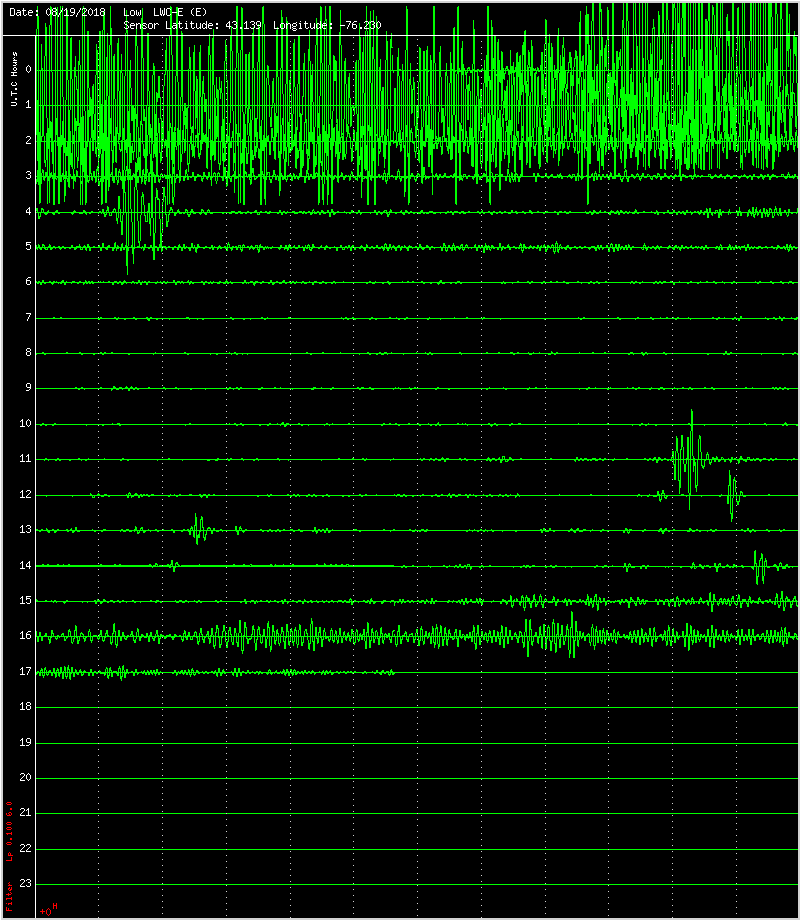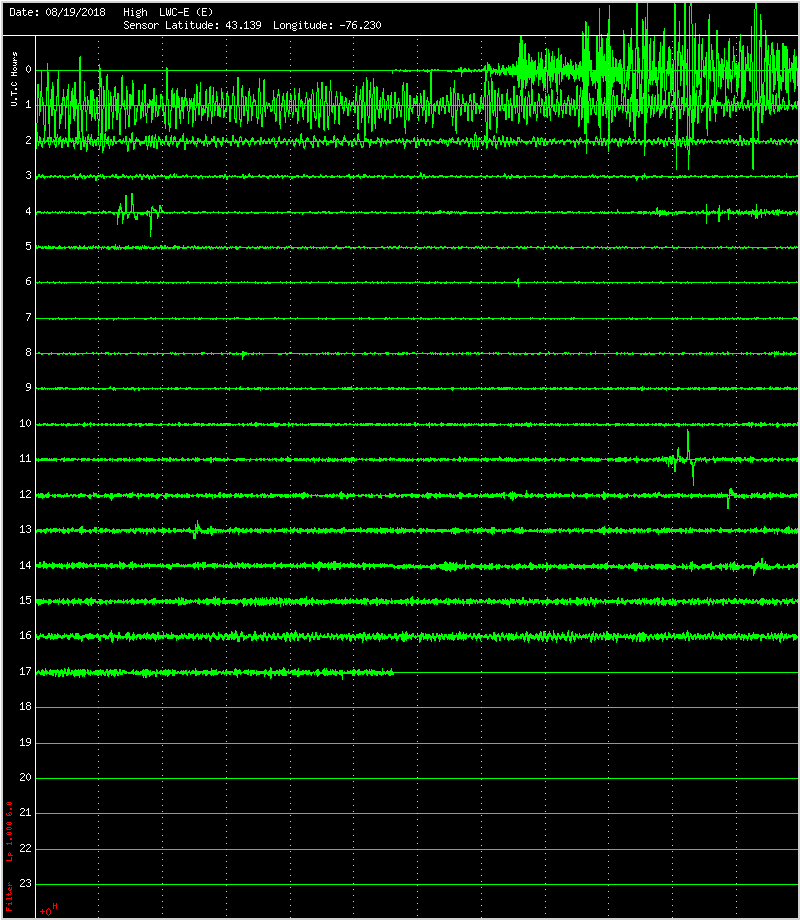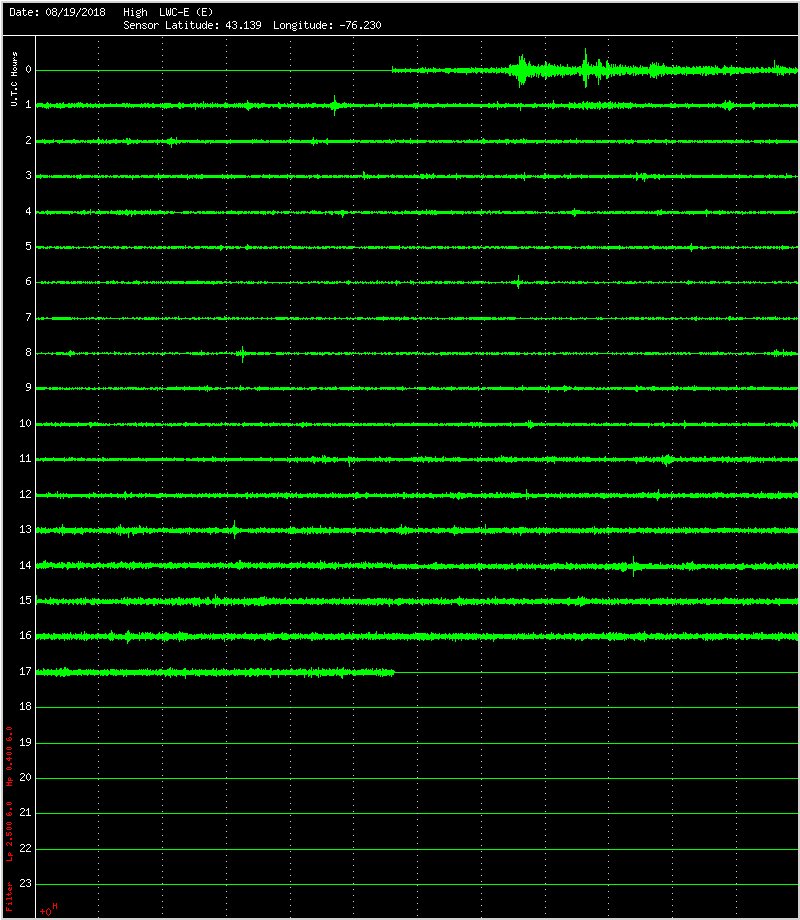

The three images below show data recorded by my home made seismograph. The images span up to one full day's worth of data starting at midnight (GMT) and updated hourly.
The seismometer generates two channels of output data. The first
image shows the data recorded by the low
frequency channel. The LF channel is more sensitive to long range
or "teleseismic"
events. The second image shows data recorded in the the high
frequency channel. The HF channel is insensitive to most distant
events, but is more sensitive to nearby events. Since I am
located in central New York, there typically isn't much to see in the
high frequency record. But I can usually see most events
worldwide, stronger than magnitude 6.0 or so, in the low
frequency channel. The third image shows HF channel data that has
been band pass filtered to the range of 0.4 to 2.0 Hz. For some
local or regional events this filtered data will clearly show a signal
that is obscure or undetectable in the unfiltered channel output.
Most of the records will show several short term transients that are caused by someone entering the room directly above the seismograph sensor, which is located in the basement. Usually, this happens when somebody goes in to put food in the cats' dishes, so I call these events "catastrophes" (or maybe cataclysms).
Low frequency channel output:
